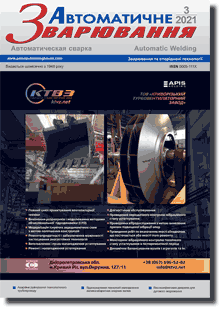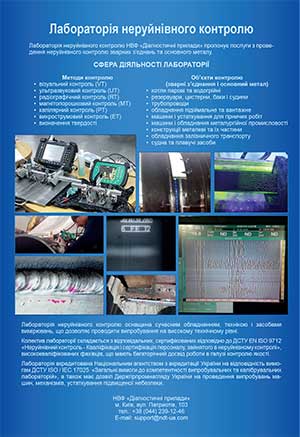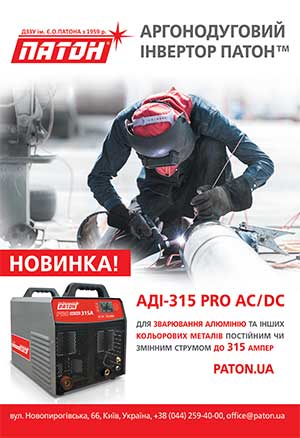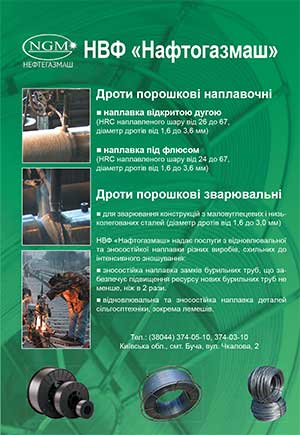| 2021 №03 (06) |
DOI of Article 10.37434/as2021.03.07 |
2021 №03 (08) |

"Avtomatychne Zvaryuvannya" (Automatic Welding), #3, 2021, pp. 40-46
Investigation of structure, mechanical and thermophysical properties of electron beam modified welds on copper parts of tuyeres
V.M. Nesterenkov1, V.I. Zagornikov1, Yu.V. Orsa1, S.D. Zabolotny2, A.S. Belyaev2
1ІЕЗ ім. Є.О. Патона НАН України, 03150, м. Київ, вул. Казимира Малевича, 11. E-mail: office@paton.kiev.ua
2V.M. Bakul Institute for Superhard Materials of the NAS of Ukraine, 2, Avtozavodskaya str., 04074, Kiev, Ukraine. Е-mail: alcon@ism.kiev.ua
The study of real operating conditions of the tuyere for oxygen blasting shows that in its head part, located near reaction zones of the converter, large thermal stresses arise caused by non-uniform heating of diff erent parts of the unit. The nozzles of the head are intensively cooled by water and oxygen, and the tip of the tuyere, on the contrary, is heated by thermal radiation of the liquid metal pool. Namely, thermal stresses along with mechanical loads (reaction of the return eff ect from oxygen jets fl owing from the nozzles) cause premature destruction of the welds joining the tuyere nozzles with its tip. The need in developing electron beam welding of components of copper tuyeres is predetermined by disadvantages of using the traditional method of their welding – argon-arc method, which does not provide satisfactory properties of welded joints and their stability during operation of a product. The use of electron beam welding in the manufacture of tuyere heads for oxygen blasting allows increasing their service characteristics by alloying welding pool with the elements, having a deoxidizing eff ect on liquid copper. At the same time in order to increase the service life of tuyere heads it is necessary to reduce the level of thermal stresses in them. The latter becomes possible if the weld metal in terms of thermal conductivity is as close as possible to the base metal. The paper presents the results of mechanical tests of electron beam welded joints produced on M1 copper using diff erent alloying inserts. On the basis of studies of microstructure and character of fractures of the modified electron beam welds, the infl uence of alloying inserts on their operational properties was established. Together with the specialists from the V. Bakul Institute for Superhard Materials of the NAS of Ukraine, a procedure for conducting investigations on thermal conductivity of welded joints was developed and measurements of thermal conductivity coefficients for the joints produced on M1 copper by AAW and EBW methods using alloying inserts was performed. Computer simulation of the temperature field arising in the areas of welded joints in the conditions of operation of copper tuyeres was also performed. 12 Ref., 1 Tabl., 8 Fig.
Keywords: electron beam welding, weld modification using alloying inserts, metallographic and factual examinations, thermal conductivity, porosity
Received: 15.02.2021
References
1. Nazarenko, O.K., Kajdalov, A.A., Kovbasenko, S.N. et al. (1987) Electron beam welding. Kiev, Naukova Dumka [in Russian].2. Agarkov, V.Ya., Trofimova, K.G. (1983) Porosity of welds in electron beam welding of copper. In: Technology, organization of labour, production and monitoring. Ser.: Tekhnologiya, Organizatsiya i Mekhanizatsiya Mekhanosborochnogo i Svarochnogo Proizvodstva, 12, 1–4 [in Russian].
3. Nazarenko, O.K., Agarkov, V.Ya., Ikonnikov, V.I. (1986) Infl uence of method of edge preparation on pore formation in weld during electron beam welding. Avtomatich. Svarka, 2, 21-25 [in Russian].
4. Agarkov, V.Ya. (1982) Porosity in electron beam welds (Review). Ibid., 2, 63–68 [in Russian].
5. Ilyushenko, V.M., Lukyanchenko, E.P. (2013) Welding and surfacing of copper and alloys on its base. Kiev, IAW [in Russian].
6. Zarechensky, A.V., Agarkov, V.Ya., Kolechko, A.A. et al. (1980) Electron beam welding of tops of lances of oxygen- blown vessel. Avtomatich. Svarka, 10, 68–69 [in Russian].
7. Stummer, M., Stütz, M., Aumayr, A., Enzinger, N. (2018) Electron beam welding of copper using plasma spraying for filler metal deposition. Welding in the World, 62, 1341-1350. https://doi.org/10.1007/s40194-018-0637-z
8. Enzinger, N., Loidolt, P., Wiednig, C. et al. (2017) Electron beam welding of thick-walled copper components. Sci. and Technol. of Welding and Joining, 22, 2, 127-132. https://doi.org/10.1080/13621718.2016.1204516
9. Kanigalpula, P.K.C., Jaypuria, S., Pratihar, D.K., Jha, M.N. (2018) Experimental investigations, input-output modeling, and optimization of spiking phenomenon in electron beam welding of ETP copper plates. Measurement, 129, 302-318. https://doi.org/10.1016/j.measurement.2018.07.040
10. Kanigalpula, P.K.C., Chatterjee, A., Pratihar, D.K. et al. (2015) Eff ects of electron beam welding on microstructure, microhardness, and electrical conductivity of Cu-Cr-Zr alloy plates. J. of Mater. Eng. and Performance, 24, 4681-4690. https://doi.org/10.1007/s11665-015-1790-9
11. Volkov, D.P., Korablev, V.A., Zarichnyak, Yu.P. (2006) Study guides for laboratory works on course “Thermophysical properties of substances”. St.-Petersburg, GU ITMO [in Russian].
12. (1986) Theory of welding processes. Ed. by V.V. Frolov. Moscow, Mashinostroenie [in Russian].






